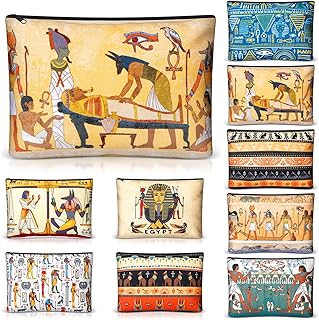As the world approaches a monumental cultural event, the Grand Egyptian Museum (GEM) is set to officially open its doors on November 1, 2025, after years of delays and anticipation.
Located near the Giza Pyramids, this massive museum is the world's largest archaeological museum, housing over 100,000 artifacts spanning 7,000 years of ancient Egyptian history.
With a cost exceeding $1 billion USD, the museum represents a quantum leap in preserving Egypt's Heritage, using modern technology to offer an interactive experience that attracts tourists and scholars alike. However, some sources indicate that public opening might be on November 4, following The Official Inauguration Ceremony.
The story of the Grand Egyptian Museum began in 2002, when the Egyptian government announced plans to build a museum that gathers ancient Egypt's treasures under one roof, away from the overcrowding in the traditional Egyptian Museum in Tahrir Square, Cairo.
The Project Was Delayed Several Times due to political, economic, and geopolitical challenges, including regional tensions, but it is now ready to reveal its wonders. The Museum covers a vast area of 490,000 square meters, designed in a triangular shape symbolizing the pyramids, with a direct view of the Giza Pyramids.
It is Expected to Attract Millions of Visitors Annually, boosting Egyptian tourism and contributing to the local economy.
Archaeological Treasures: A Unique Collection of Its Kind
The museum contains over 100,000 artifacts, including the complete collection of King Tutankhamun's Treasures for the first time under one roof.
Exhibits Include the Famous Golden Mask, the Golden Coffin, Chariots, Jewelry, Statues, as well as furniture and daily tools from his tomb. The museum also displays the Massive Statue of Ramses II in the Grand Hall, statues of Amenhotep III and his wife Queen Tiye, the triad statue of Menkaure, and mummy masks of Yuya and Thuya from the Eighteenth Dynasty.
Other Treasures include the Narmer Palette dating back to 2530 BC, a 4,000-year-old preserved Crocodile Statue, Gold-Plated Girl Remains, and Decorated Fabrics.
The Exhibits Are Designed to Cover Different Historical Periods, from the Pharaonic Era to later ages, focusing on daily life, religion, and arts. The museum also includes interactive exhibits using Augmented and Virtual Reality to revive historical scenes, making the visit an Engaging Educational Experience.
Design and Technology: A Blend of Ancient and Modern
The Museum Features Stunning Architectural Design, won by Irish engineers from Heneghan Peng Architects in an international competition in 2003.
The Building Includes Spacious Exhibition Halls, Restoration Laboratories, Research Facilities, as well as Outdoor Gardens and Recreational Areas.
The Museum Focuses on Sustainability, using solar energy and eco-friendly materials, reflecting Egypt's commitment to preserving heritage while protecting the environment.
Technologically, the museum uses the latest technologies to display artifacts, including Interactive Screens and Virtual Tours, making history accessible to everyone.
It also includes Educational Centers for Children and Youth, aiming to enhance awareness of Egyptian history.
Cultural and Economic Importance
The opening of the Grand Egyptian Museum is a significant step in restoring Egypt's Position as A Global Cultural Center, especially after years of political turmoil.
It is expected to enhance tourism, being near the pyramids, making it An Ideal Destination for Tourists. It also Contributes To Heritage Preservation, as thousands of pieces were transferred from the old museum to be displayed in a better environment.
However, the project has faced criticisms regarding high costs and delays, but it is now seen as a symbol of Egyptian progress.
Visit Information and Tickets
The Museum will be open daily except Saturdays and Wednesdays starting November 4, with ticket prices varying by categories.
Advance Booking Via the Official Website Is Recommended to avoid crowds. With the opening of the Grand Egyptian Museum, the world enters a new era in exploring ancient Egyptian history.
For more News, subscribe to our newsletter or share your thoughts in the comments below.
 |  |  |
 |  |  |
